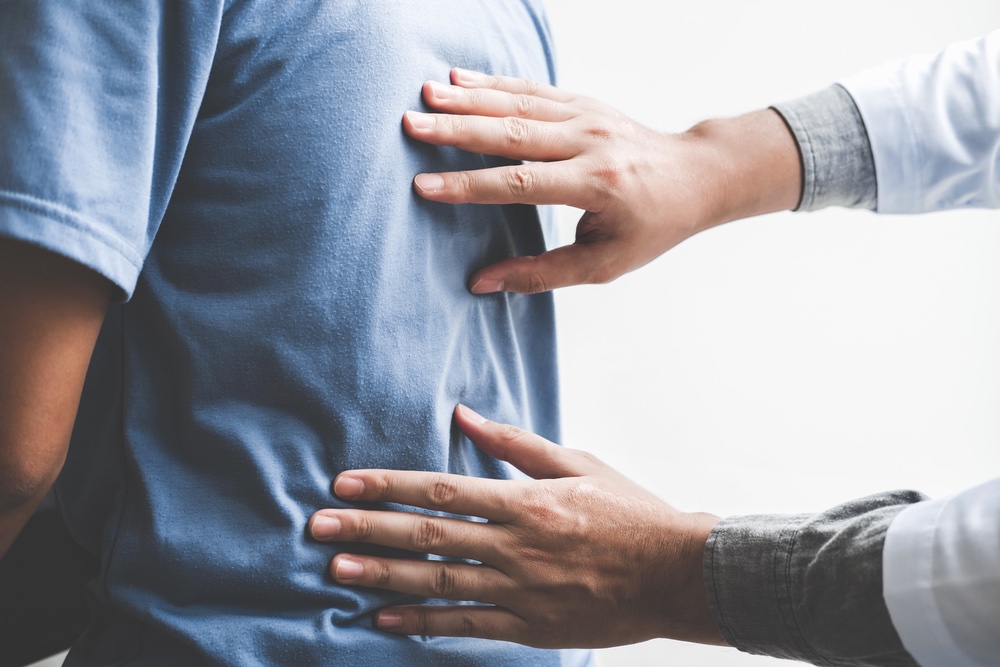Understanding the Condition and the Benefits of Spinal Decompression
Spinal stenosis is a common and often painful condition that affects a significant portion of the population, especially those aged 50 and older. If you’re one of the millions of people dealing with this condition, you’re not alone. In this blog, we will delve into spinal stenosis, its causes, symptoms, and most importantly, explore a non-surgical alternative for relief – spinal decompression.
What is Spinal Stenosis?
Spinal stenosis is characterized by the narrowing of the spinal canal, the protective bony tunnel that houses the spinal cord and nerves. As the spinal canal narrows, it leaves less room for the spinal nerves, resulting in increased pressure, crowding, and pain and discomfort. This condition primarily affects individuals aged 50 and older but can occur at any age due to various underlying factors.
The most common location for spinal stenosis is in the lower back (lumbar spine) or the neck (cervical spine). However, it can also affect the middle of the back (thoracic spine). The symptoms of spinal stenosis often manifest as pain, tingling, numbness, and weakness in the affected areas. In severe cases, it can lead to a loss of bowel or bladder function, which requires immediate medical attention.
Simple activities like walking or light exercise can trigger a flare-up of spinal stenosis symptoms. Interestingly, some individuals find temporary relief by bending forward or sitting, which slightly opens the spinal canal and reduces pressure on the nerves.
Causes of Spinal Stenosis
Understanding the causes of spinal stenosis is crucial in developing effective treatment strategies. Several factors can contribute to the development of this condition:
- Genetics: Some individuals may inherit a genetic predisposition to a narrower spinal canal, making them more susceptible to spinal stenosis as they age.
- Degenerative Disc Disease: Over time, the intervertebral discs in the spine can degenerate, decreasing the space within the spinal canal.
- Scoliosis: Abnormal curvature of the spine, such as scoliosis, can cause an irregular shape of the spinal canal, potentially leading to stenosis.
- Arthritis: Both rheumatoid arthritis (RA) and osteoarthritis can result in the growth of bone spurs and inflammation in the spine, contributing to the narrowing of the spinal canal.
- Spinal Tumors: Abnormal growths within the spine can directly compress the spinal cord or nerves, causing stenosis.
- Spinal Trauma or Injury: Past injuries or trauma to the spine can result in changes to the spine’s stability, density, and size, leading to reduced space within the spinal canal.
It’s important to note that spinal health is interconnected, meaning that an issue in one area of the spine can have a cascading effect on the overall health of the spine. Therefore, a holistic approach to spinal health is crucial in preventing and managing spinal stenosis.
Recognizing the Symptoms
The symptoms of spinal stenosis can vary in severity, but they typically include:
- Deep pain/aching: Often felt in the lower back, buttocks, and thighs, this pain can be persistent and debilitating.
- Numbness and tingling: Many individuals with spinal stenosis experience numbness and tingling sensations in their legs and sometimes even their shoulders.
- Loss of bowel and/or bladder function: In severe cases, spinal stenosis can lead to a loss of control over bowel and bladder functions, which requires immediate medical attention.
- Loss of feeling: Some individuals may experience a loss of sensation in their arms or legs due to nerve compression.
Spinal Decompression: A Non-Surgical Solution
There is hope for those dealing with the discomfort and limitations of spinal stenosis. Spinal decompression therapy offers a non-surgical, non-invasive approach to relieving the pain associated with this condition. This innovative therapy is gaining recognition for its effectiveness in alleviating the pressure on the spinal nerves, relieving patients who may have exhausted other treatment options.
Spinal decompression involves using a specialized table or device to stretch and decompress the spine gently. This therapy encourages the retraction of herniated or bulging discs by creating a negative pressure within the spinal discs. It promotes the flow of oxygen, nutrients, and fluids into the affected area. As a result, damaged discs have the opportunity to heal, and the spinal canal may regain some of its lost space, reducing nerve compression and pain.
How Does Spinal Decompression Work?
- Patient Evaluation: The first step in spinal decompression therapy is a thorough evaluation by a qualified healthcare provider. This assessment helps determine the severity of the spinal stenosis and whether the patient is a suitable candidate for decompression therapy.
- Treatment Sessions: The patient is comfortably positioned on the table during a typical spinal decompression session. A harness is placed around the pelvis or trunk. The table then gently applies controlled traction and relaxation cycles, targeting the specific spinal segment in question.
- Relief and Healing: Patients often report reduced pain and improved mobility over a series of sessions. The therapy aims to relieve pressure on the spinal nerves, allowing the body’s natural healing processes to take over.
- Holistic Approach: In conjunction with decompression therapy, healthcare providers may recommend lifestyle modifications, exercises, and other therapies to enhance the patient’s overall spinal health and prevent future issues.
Spinal decompression is a safe and well-tolerated treatment option for many individuals suffering from spinal stenosis. It offers hope for those who prefer to avoid surgery or seek alternative therapies to complement their treatment plan.
Lifestyle Modifications for Spinal Stenosis
In addition to seeking professional medical care and considering treatments like spinal decompression, lifestyle modifications can also help manage spinal stenosis and improve your overall spinal health. Here are some recommendations:
- Maintain a Healthy Weight: Excess weight stresses your spine, especially the lower back. Losing weight through a balanced diet and regular exercise can alleviate some of this pressure.
- Stay Active: While strenuous activities may exacerbate your symptoms, staying physically active is essential. Low-impact exercises like swimming, walking, and stationary biking can help improve strength and flexibility without straining your spine.
- Proper Posture: Pay attention to your posture when sitting and standing. Maintaining good posture can reduce the strain on your spine and minimize discomfort.
- Ergonomic Workstations: If you have a desk job, ensure your workstation is ergonomically designed. Use an ergonomic chair and arrange your computer monitor, keyboard, and mouse to reduce strain on your neck and back.
- Stretching and Strengthening: Consult a physical therapist or healthcare provider to develop a tailored exercise program. Targeted stretching and strengthening exercises can help support your spine and alleviate pain.
- Balanced Nutrition: A diet rich in nutrients like calcium and vitamin D is crucial for maintaining bone health. These nutrients can help prevent the progression of degenerative conditions that contribute to spinal stenosis.
- Avoid Prolonged Sitting or Standing: If your job or daily routine requires extended periods of sitting or standing, take breaks to change your position. Simple movements can prevent stiffness and discomfort.
- Orthopedic Support: Consider using orthopedic devices such as lumbar cushions or braces to support your spine during activities that may aggravate your condition.
Remember that it’s essential to consult with a healthcare professional before starting any new exercise routine or making significant lifestyle changes, especially if you have spinal stenosis. They can provide guidance tailored to your specific condition and needs.
Your Path to a Pain-Free Life
Living with spinal stenosis can be challenging, but it’s important to remember that you have options for relief and a brighter future ahead. By seeking professional care, exploring non-surgical treatments like spinal decompression, and making lifestyle modifications, you can take control of your spinal health and regain your quality of life.
If you or a loved one is dealing with spinal stenosis, consider scheduling a consultation with Texas Nerve and Spine in Sugar Land, TX. Our team of experts is dedicated to providing compassionate and effective care, and we specialize in innovative treatments like spinal decompression.
To take the first step toward a pain-free life; schedule your consultation.
We are here to support you on your journey to better spinal health and a brighter future. Don’t let spinal stenosis define your life; take control and start your path to relief today.



